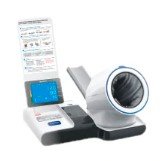The Impact of Industry 4.0 on Phlebotomy: Advancements in Automated Blood Collection Systems
Summary
- Industry 4.0 is revolutionizing the field of phlebotomy in the United States by advancing automated blood collection systems.
- New technologies such as robotics, Artificial Intelligence, and data analytics are enhancing efficiency and accuracy in the lab.
- The integration of Industry 4.0 in phlebotomy is improving patient care and streamlining laboratory processes.
Introduction
Industry 4.0, also known as the Fourth Industrial Revolution, is having a significant impact on various industries, including healthcare. In the field of phlebotomy in the United States, Industry 4.0 is revolutionizing the way blood samples are collected and processed. Automated blood collection systems are becoming increasingly prevalent in medical labs, thanks to advancements in technology such as robotics, Artificial Intelligence, and data analytics. These innovations are improving efficiency, accuracy, and patient care in the lab setting.
Automation in Phlebotomy
Automated blood collection systems have been increasingly adopted in medical labs across the United States. These systems utilize robotics and advanced technology to streamline the process of collecting and processing blood samples. Phlebotomists can now rely on automated devices to perform tasks such as Venipuncture, specimen labeling, and sample storage. This automation not only improves the speed and accuracy of sample collection but also reduces the risk of human error.
Benefits of Automation in Phlebotomy
- Increased Efficiency: Automated blood collection systems can process samples at a much faster rate than traditional manual methods, allowing labs to handle a higher volume of tests in a shorter amount of time.
- Improved Accuracy: The use of robotics and Artificial Intelligence in blood collection helps to minimize the risk of errors, ensuring that Test Results are reliable and accurate.
- Enhanced Patient Care: Automated systems make the blood collection process quicker and more comfortable for patients, leading to a better overall experience.
- Streamlined Laboratory Processes: Automation in phlebotomy allows labs to operate more efficiently and effectively, reducing costs and improving Workflow.
Integration of Industry 4.0 in Phlebotomy
The integration of Industry 4.0 technologies in the field of phlebotomy is driving innovation and advancement. Medical labs are increasingly utilizing robotics, Artificial Intelligence, and data analytics to improve the quality of patient care and streamline laboratory processes. These technologies enable labs to process samples more efficiently, analyze data more effectively, and provide more accurate Test Results.
Technological Advancements in Phlebotomy
- Robotics: Automated blood collection systems use robotics to perform tasks such as Venipuncture and specimen handling, reducing the need for human intervention and improving precision.
- Artificial Intelligence: AI algorithms are being utilized to analyze blood samples and identify abnormalities or patterns that may indicate a specific condition, assisting Healthcare Providers in making accurate diagnoses.
- Data Analytics: The use of data analytics in phlebotomy allows labs to track and analyze trends in sample collection and Test Results, enabling them to optimize processes and improve overall efficiency.
Impact on Patient Care
The advancement of automated blood collection systems in the field of phlebotomy is ultimately benefiting patient care in the United States. These technologies help to streamline the blood collection process, improve the accuracy of Test Results, and enhance the overall patient experience. Patients can expect quicker, more efficient blood draws, and Healthcare Providers can rely on more accurate and reliable Test Results to guide their treatment decisions.
Improving Efficiency and Accuracy
- Quicker Turnaround Times: Automated systems can process blood samples at a much faster rate, reducing wait times for patients and allowing Healthcare Providers to make timely treatment decisions.
- Reduced Errors: The use of robotics and AI in blood collection helps to minimize the risk of human error, ensuring that Test Results are accurate and reliable.
- Enhanced Patient Experience: Automated blood collection systems make the process of collecting blood samples quicker and more comfortable for patients, improving overall satisfaction.
Conclusion
Industry 4.0 is transforming the field of phlebotomy in the United States through the advancement of automated blood collection systems. The integration of robotics, Artificial Intelligence, and data analytics is improving efficiency, accuracy, and patient care in medical labs across the country. As technology continues to evolve, we can expect to see further advancements in automated phlebotomy systems that will ultimately benefit both Healthcare Providers and patients.

Disclaimer: The content provided on this blog is for informational purposes only, reflecting the personal opinions and insights of the author(s) on the topics. The information provided should not be used for diagnosing or treating a health problem or disease, and those seeking personal medical advice should consult with a licensed physician. Always seek the advice of your doctor or other qualified health provider regarding a medical condition. Never disregard professional medical advice or delay in seeking it because of something you have read on this website. If you think you may have a medical emergency, call 911 or go to the nearest emergency room immediately. No physician-patient relationship is created by this web site or its use. No contributors to this web site make any representations, express or implied, with respect to the information provided herein or to its use. While we strive to share accurate and up-to-date information, we cannot guarantee the completeness, reliability, or accuracy of the content. The blog may also include links to external websites and resources for the convenience of our readers. Please note that linking to other sites does not imply endorsement of their content, practices, or services by us. Readers should use their discretion and judgment while exploring any external links and resources mentioned on this blog.
